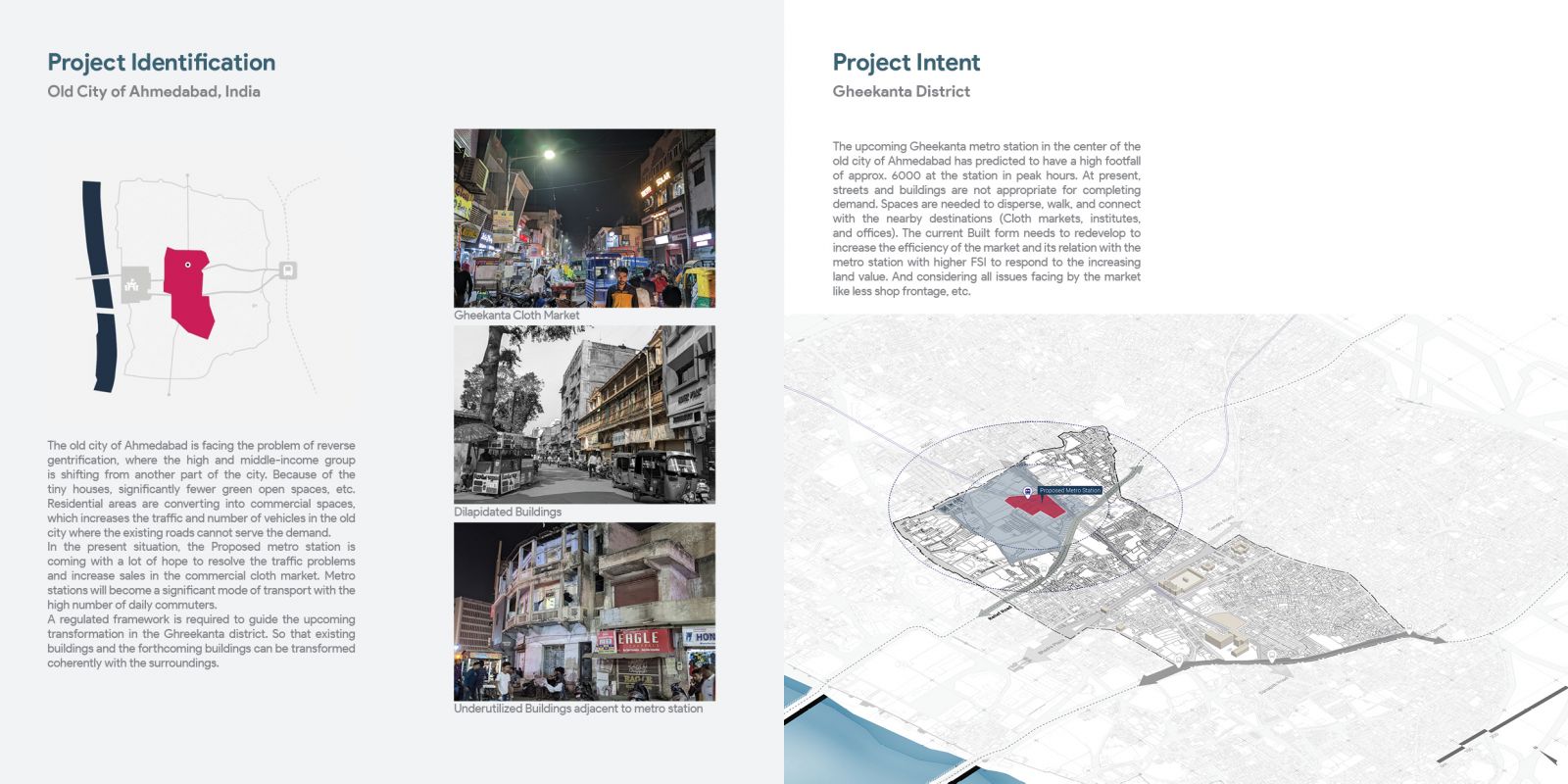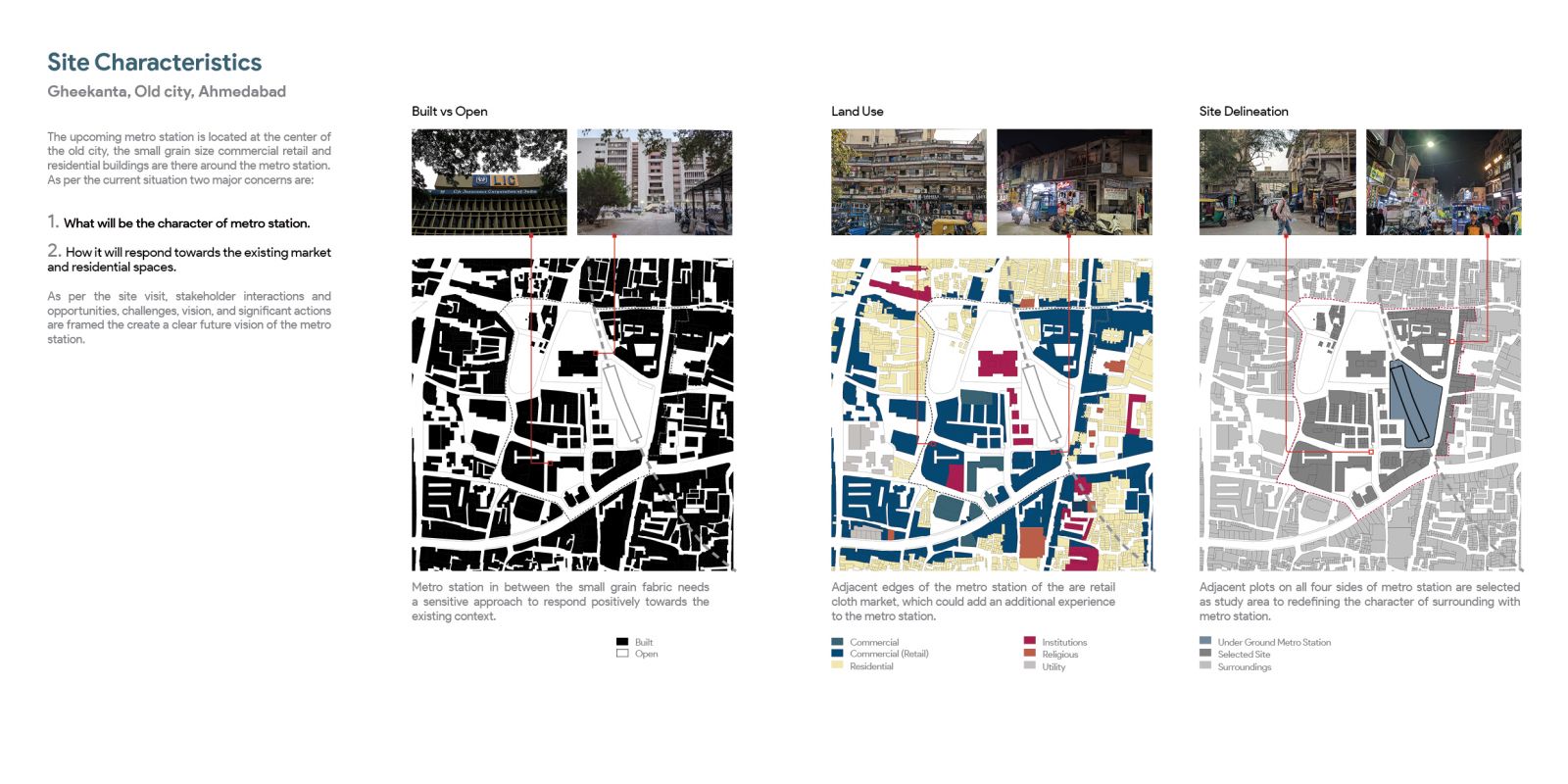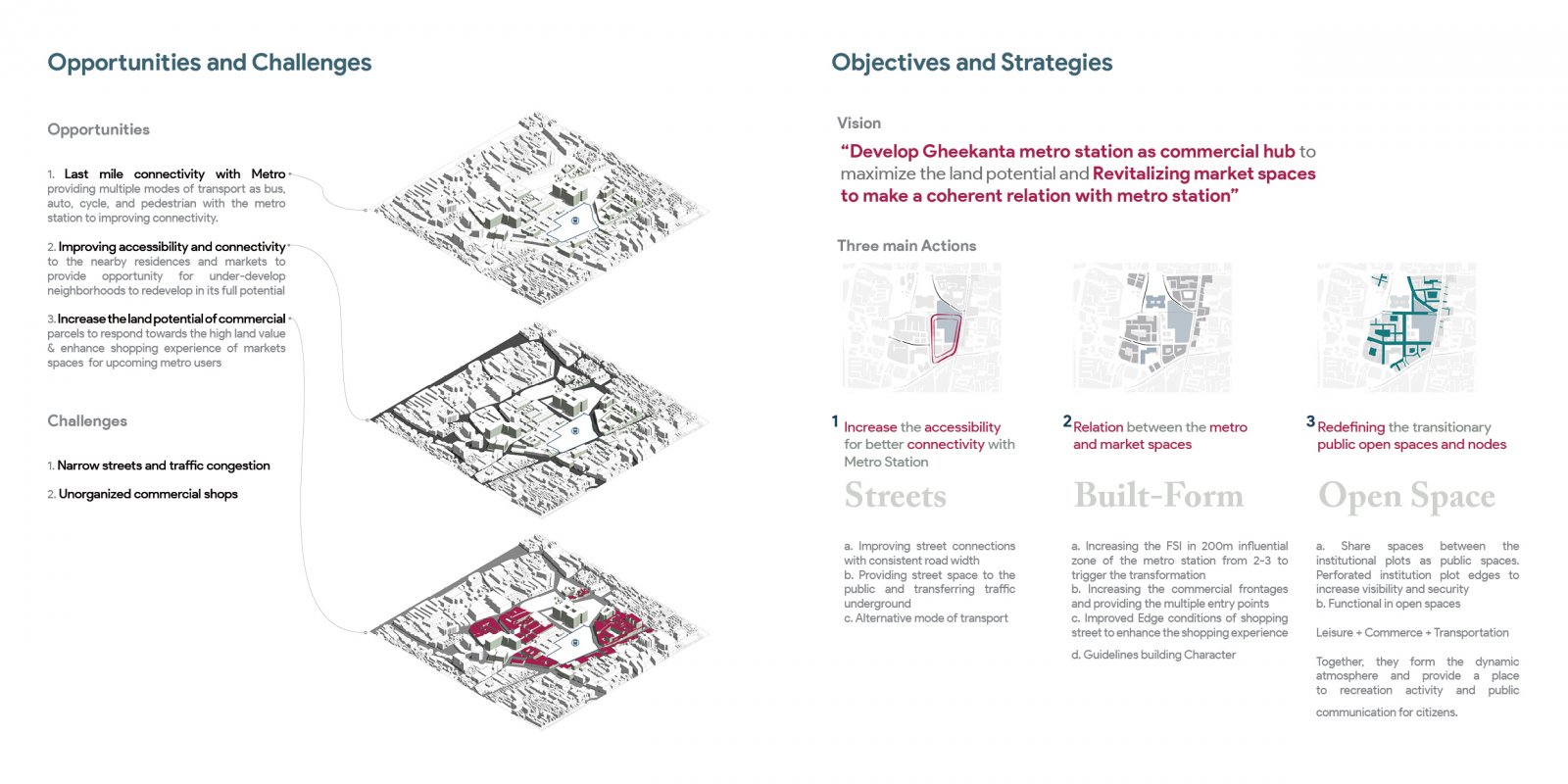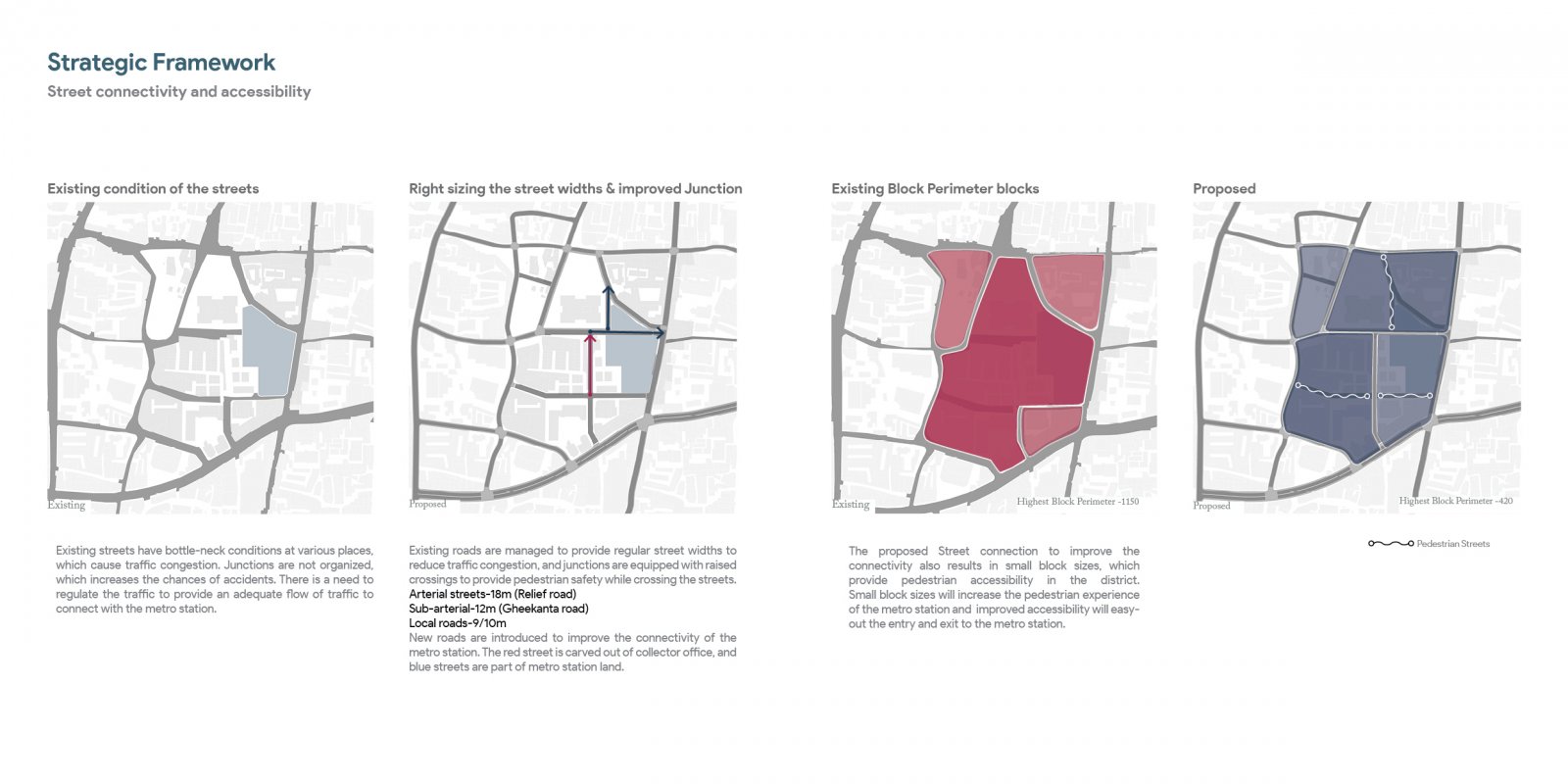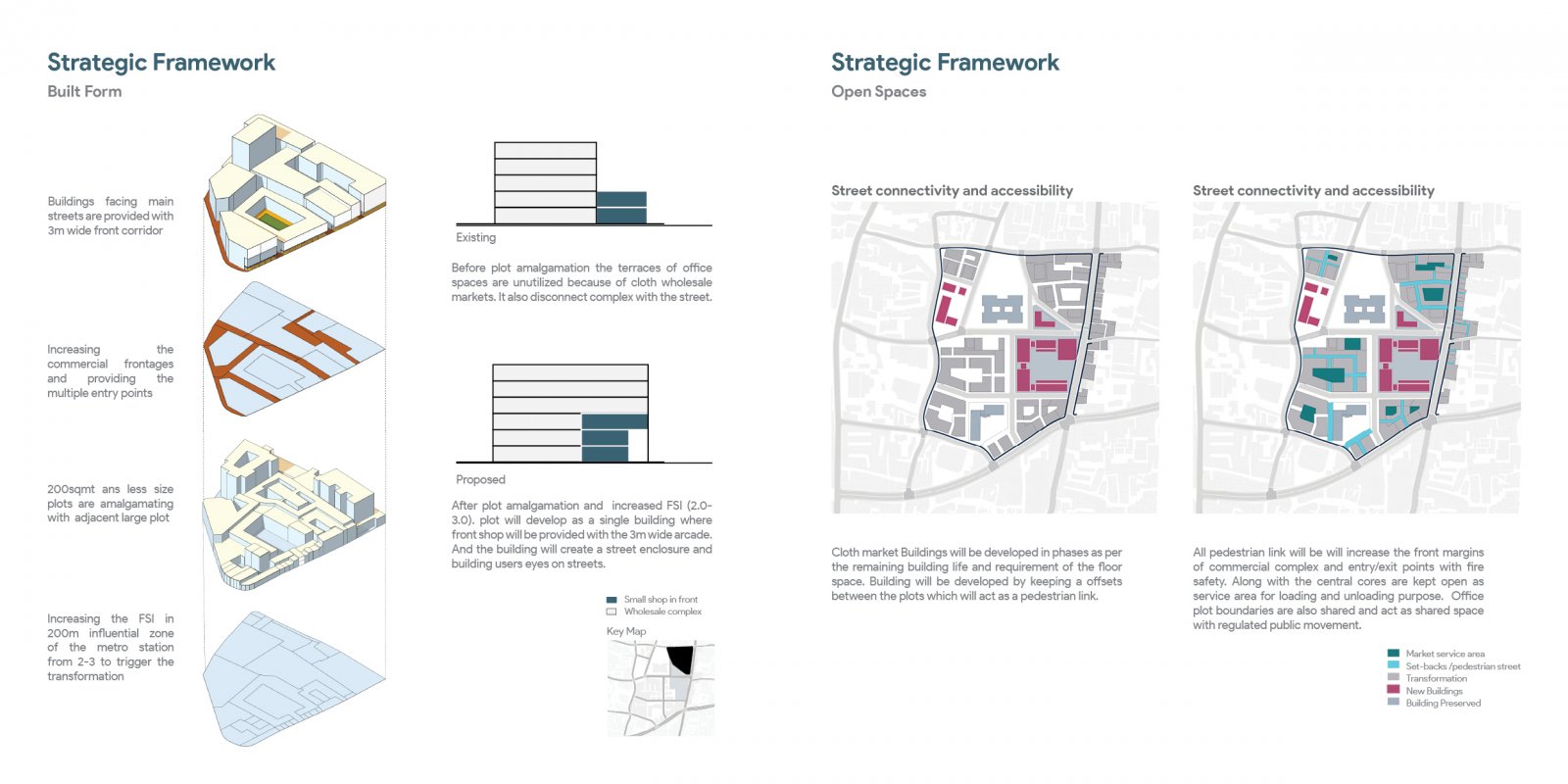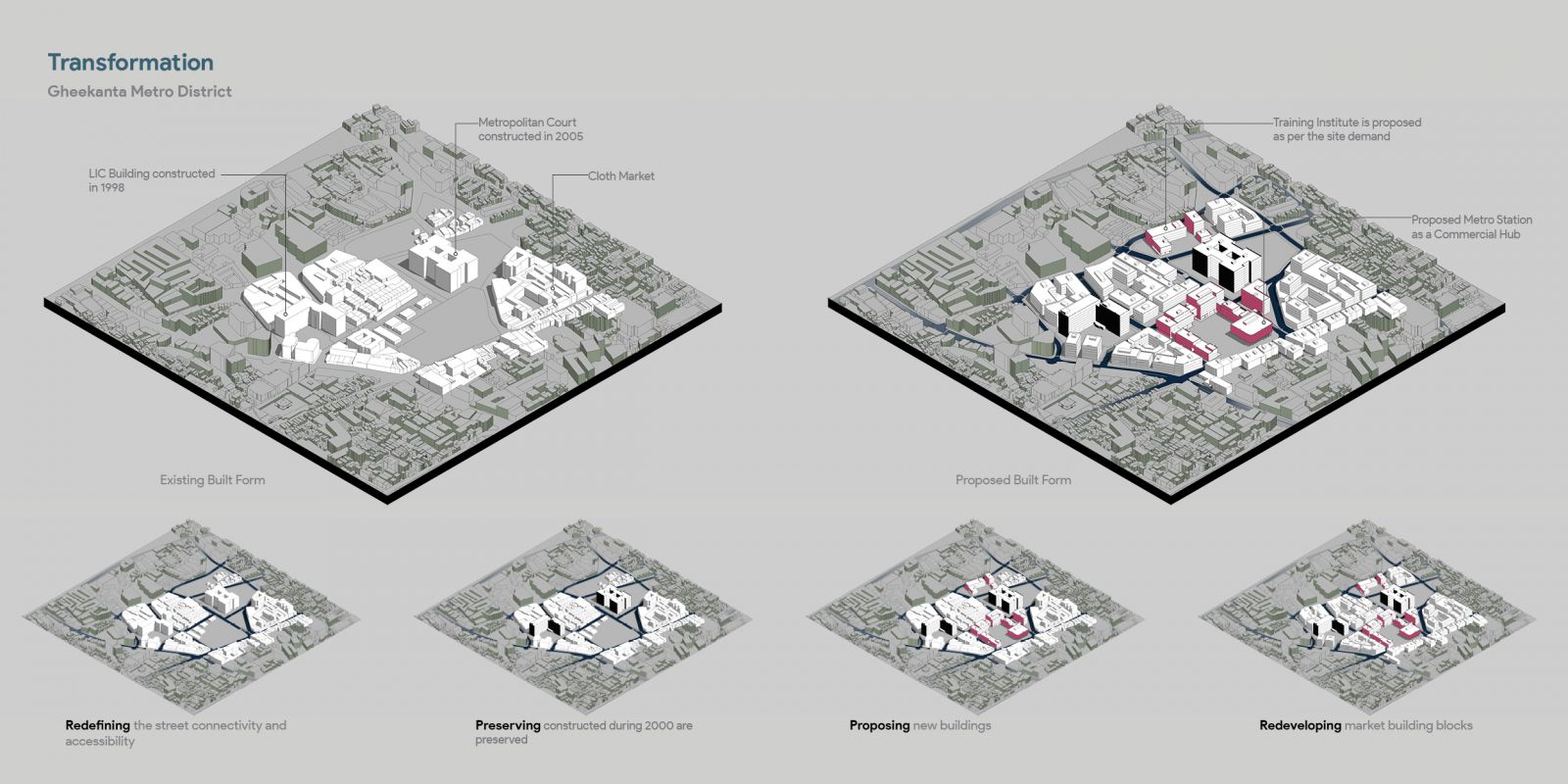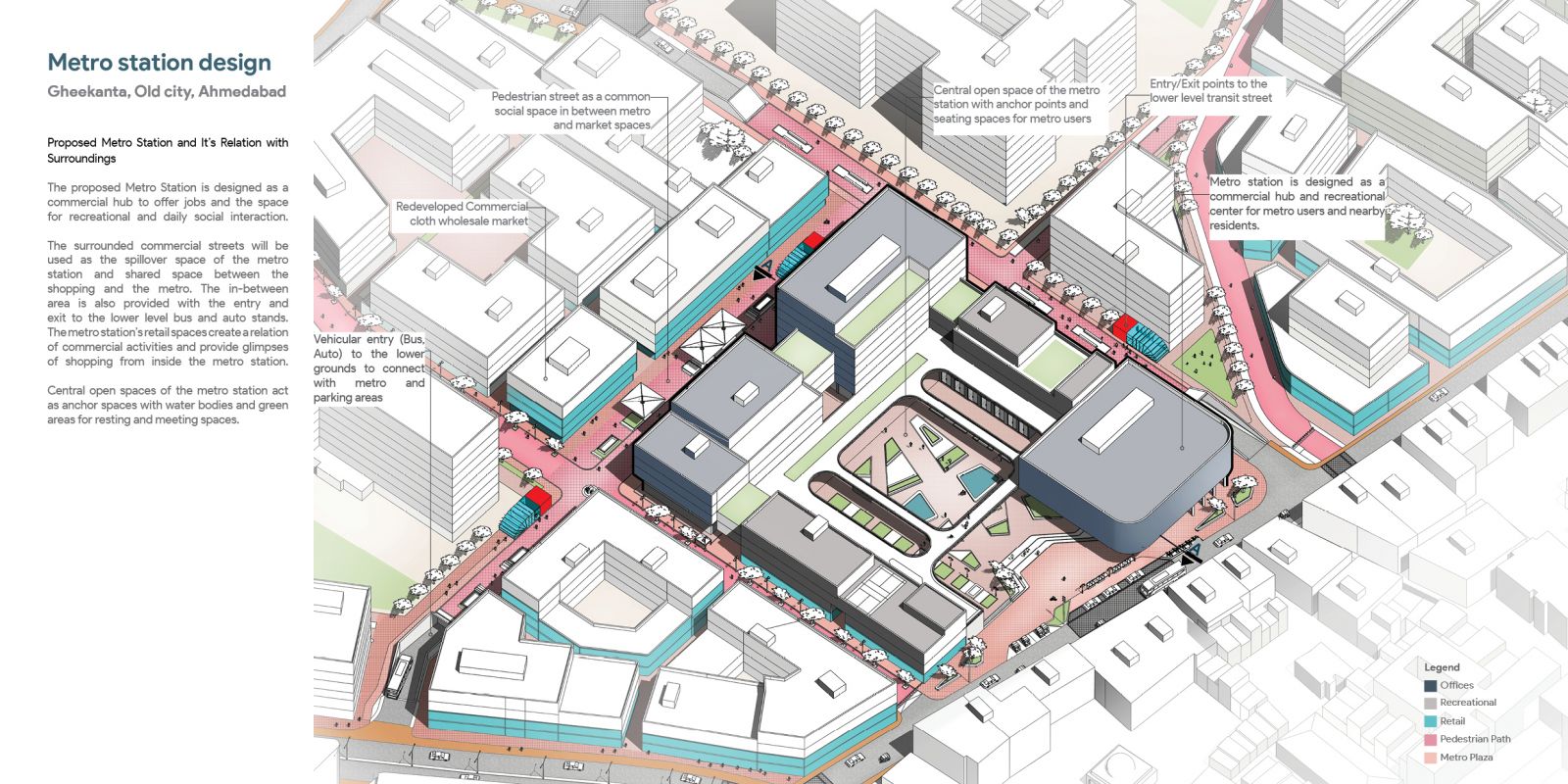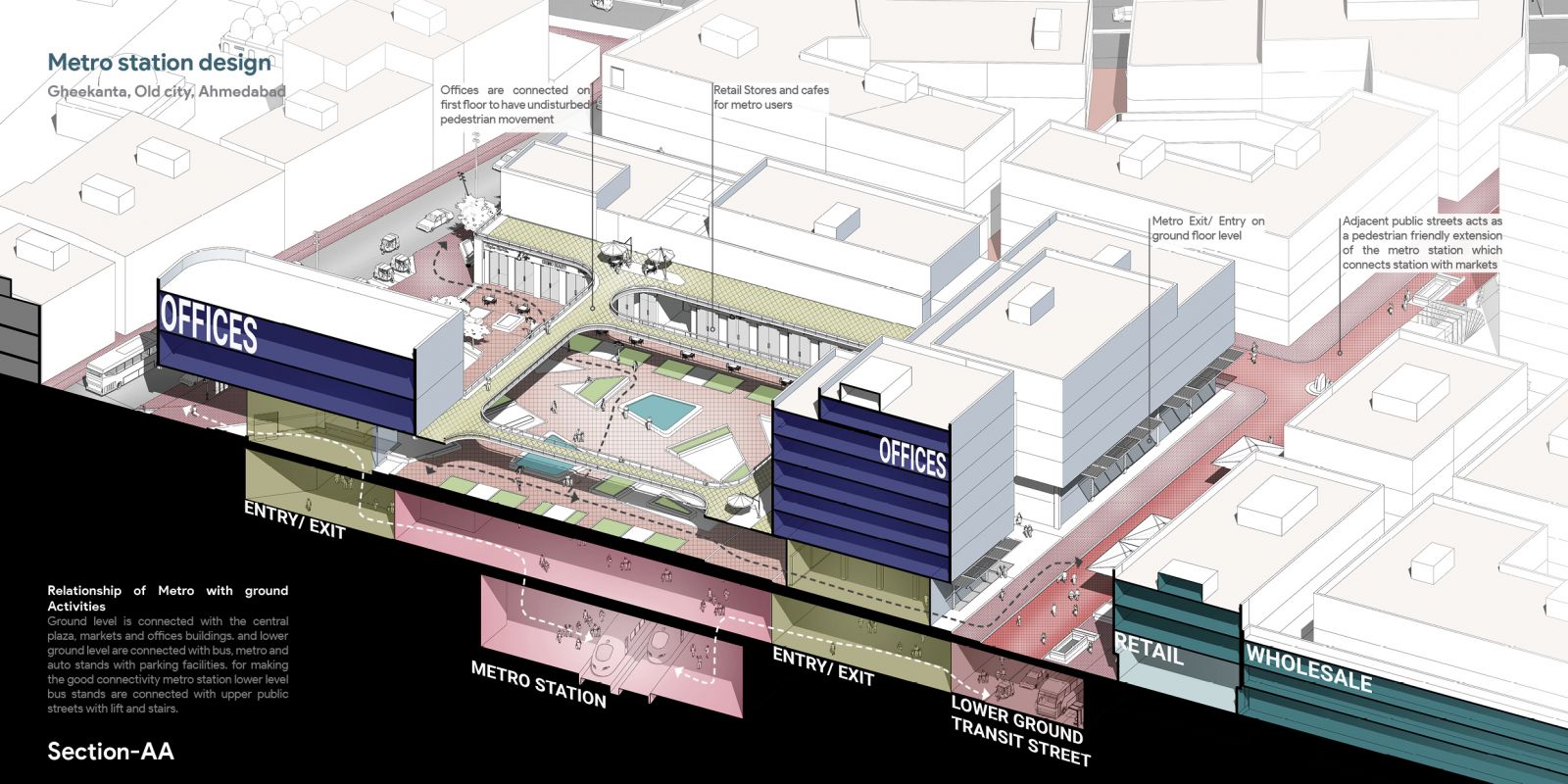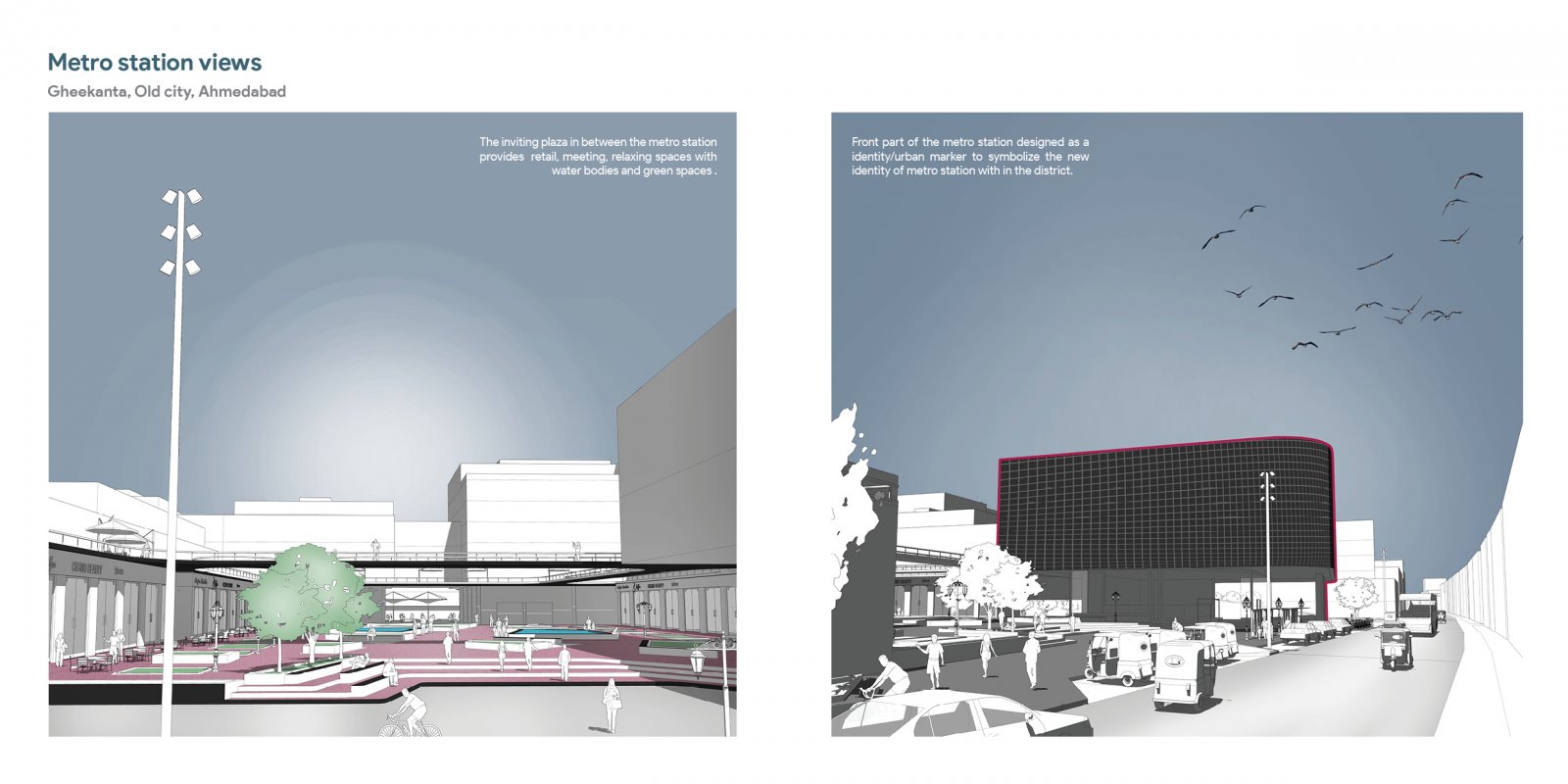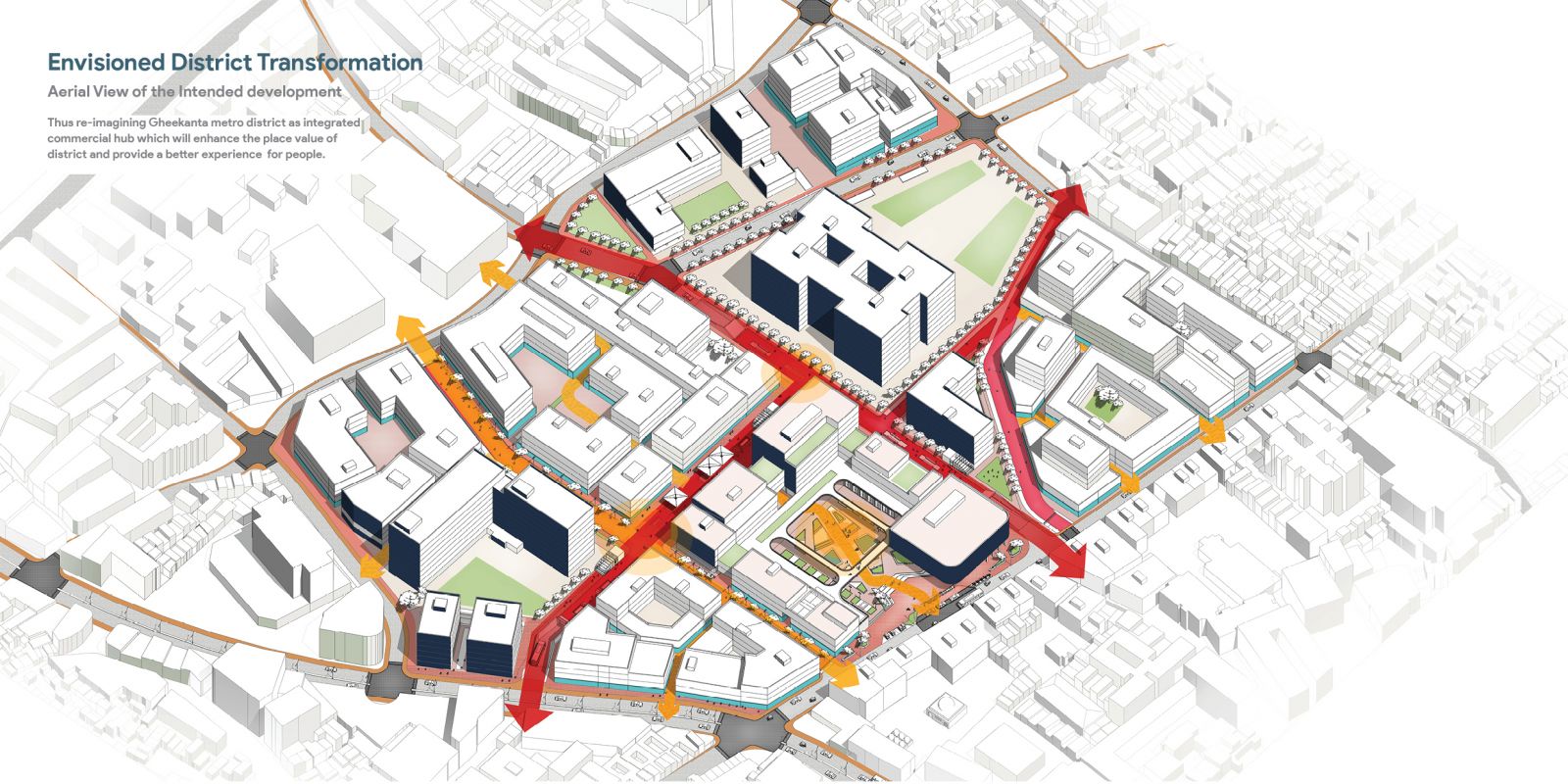- Student PRIY BHUSHAN
- Code PUD20260
- Faculty Planning
- Tutor/s Purvi Chhadva,Narendra Mangwani,Aparna Joshi
The old city of Ahmedabad is facing the problem of reverse gentrification, where the high and middle-income group is shifting from another part of the city. Because of the tiny houses, significantly fewer green open spaces, etc. Residential areas are converting into commercial spaces, which increases the traffic and number of vehicles in the old city where the existing roads cannot serve the demand.
In the present situation, the Proposed metro station is coming with a lot of hope to resolve the traffic problems and increase sales in the commercial cloth market. Metro stations will become a significant mode of transport with the high number of daily commuters.
A regulated framework is required to guide the upcoming transformation in the Ghreekanta district. So that existing buildings and the forthcoming buildings can be transformed coherently with the surroundings. The upcoming Gheekanta metro station in the center of the old city of Ahmedabad has predicted to have a high footfall of approx. 6000 at the station in peak hours. At present, streets and buildings are not appropriate for completing demand. Spaces are needed to disperse, walk, and connect with the nearby destinations (Cloth markets, institutes, and offices). The current Built form needs to redevelop to increase the efficiency of the market and its relation with the metro station with higher FSI to respond to the increasing land value. And considering all issues facing by the market like less shop frontage, etc.
